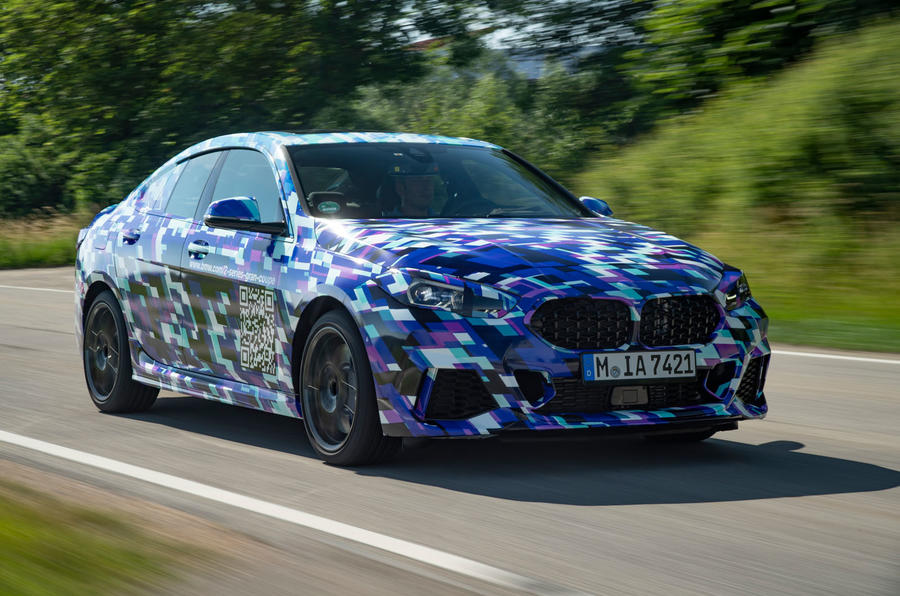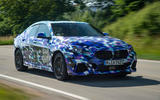BMW faced an unenviable dilemma when it began developing the 2 Series Gran Coupe. It needed to create a car with an acceptable amount of room for passengers and a spacious boot without sacrificing handling. Engineers chose to start with a disadvantage in dynamism rather than one in roominess.
After all, technology can eliminate understeer, but it can’t yet make a set of winter tyres fit in the back.
Front-wheel drive it is, then. The Gran Coupe shares its FAAR platform with the third-generation 1 Series, among other models. Using this architecture cleared up over 34mm more knee room for rear-seat passengers than in the rear-wheel drive 2 Series coupe and a usable 450-litre boot. More space for people and stuff is difficult to argue against but the idea of a front-driven BMW sports saloon is much more contentious; pugnacious loyalists will argue Munich has taken leave of its senses. The firm doesn’t think the 2’s target audience (“young professionals” in marketing-speak) will mind.

“Normal customers won’t find out whether it’s rear- or front-wheel drive. 80% of all 1 Series we sell have an engine that makes less than 150hp. We have a big volume of smaller engines and front-wheel drive is not really a disadvantage. Customers want a BMW but we know rear-wheel drive is not a reason to buy the car,” explains chassis engineer Johannes Kühberger.
Besides, BMW came well prepared to this battle, with xDrive all-wheel drive for the upper end of the model line-up. The ARB traction control system shared with the 1 Series comes from the BMW i3S, putting the engine’s ECU in charge of keeping the 2 pointed in the right direction by comparing data sent by the stability control system to the crankshaft’s rotation speed. This technology allows faster, more precise control of wheelspin. BMW also made the 2’s body stiffer by adding extra bracing in the engine bay and boomerang struts linking the rear sub-frame to the body.
Hardware and software come together to make the 306bhp M235i sharp, balanced and enjoyably predictable to drive. The xDrive all-wheel drive system does an excellent job of using both axles to juggle power as-needed to provide maximum grip, shuffling up to 50% of the turbo four’s output to the rear wheels. The Gran Coupe is inevitably a little bit front-heavy, it feels pulled rather than pushed, but a jaunt on the twisty roads around Munich reveals BMW’s chassis wizardry largely lives up to its promise of keeping understeer at bay. The steering is direct and well-weighted, though Kühberger warns development work is on-going and the car hasn’t been signed off yet.































Join the debate
Add your comment
Just grand?!
I can’t understand where the need for such a vehicle in BMW’s line has come from?, if you want more room, buy a three series?
And the point of this is BMW
And the point of this is BMW ? . Do we and more to the point do you as company really need this car. It will just steal sales from you standard range of motors Dim ot what. Plus its not great looking either. No wonder the rails are coming off the German car makers with Mercedes offering another profit warning along with decreasing sales at BMW
A misstep by BMW
A misstep by BMW, imo.
Ok, so the company felt they had to make the new 1 series FWD for reasons of packaging and economies of scales of the FWD platform (sharing with Mini models). But why did they have to the same with the 2 series?
The new 3 series is now way too large to have the kind of agile handlng characterstics that the old E30/36/46 used to have. So, here was a chance for BMW, use the new 2 series, to make a smaller RWD saloon, with the agility and sharper handling of the old generations of 3 series and keep the BMW-ness bloodline, now that 3 has grown so large.
But what do they go and do instead? They make it FWD!
I'm guessing that they're
I'm guessing that they're going for economies of scale with their FWD platform shared across MINI, 1 series and now 2. They've looked at their competitors who seem to be selling well with FWD - A class, A3, even the Golf, and thought that people don't seem to mind their compact premium cars being front driven.